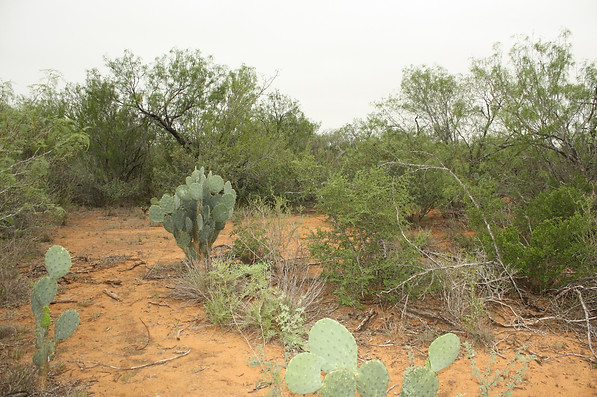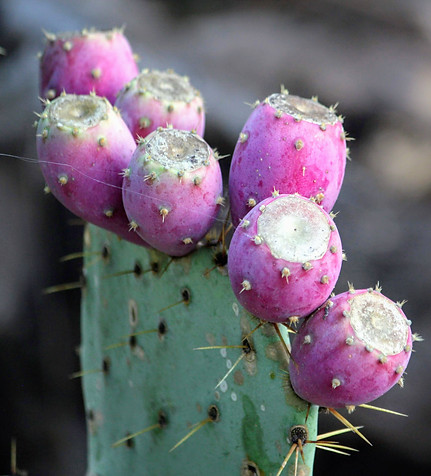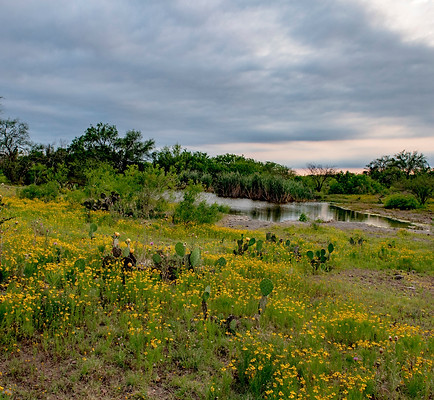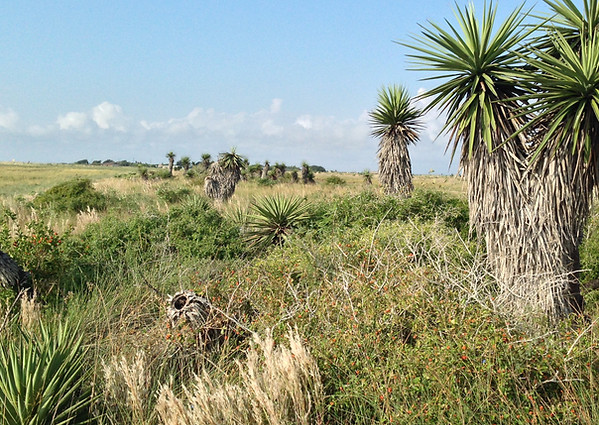.png)
The Texas tortoise is the smallest of the North American tortoises—and the only tortoise found in Texas!
Found throughout southern Texas and northeastern Mexico, their preferred habitat is dry scrubland & grasslands with succulent plants which make up the majority of their diet.
It's believed that Texas tortoises can live as long as 60 years!
It takes several years for them to reach breeding age, and they only lay a few eggs at a time, just once or twice per year. Because of their unique life history and low reproductive rate, adult tortoises are critical to the survival of the species.
The tortoise's range has been shrinking due to habitat loss and fragmentation. They also fall victim to road mortality and illegal collection.
The Texas tortoise is a protected, state threatened species. It is illegal to collect, possess, or harm a Texas Tortoise.
Here are a few ways Texans can help...

Texas counties where the Texas tortoise can be found.
Take action for the Texas tortoise

Texas tortoise habitat in South Texas. Note the native brush, grasses, and prickly pear ©Paul Crump
1. Protect Texas tortoise habitat in South Texas.
If you are a landowner in South Texas, you can help support Texas tortoise habitat. Texas Tortoises require native scrublands and grasslands with succulent plants—they especially like to dine on the fruit of the prickly pear!
Here are some of the ways you can help promote habitat for the Texas tortoise:
- Leave the prickly pear cactus on your property.
- Manage and eradicate nonnative grasses, helping native grasses to thrive.
- Maintain native, diverse thornscrub, savanna/grassland, and open scrub woodlands habitat.
Reach out to your TPWD county wildlife biologist to help develop a wildlife/habitat management plan tailored for your specific property and situation.
- To minimize accidental tortoise deaths, Caesar Kleberg Wildlife Research Institute recommends the following: "...we recommend keeping vegetation low along two-track roads and driving slowly. During the hottest months of the year, tortoises are mostly active during the first and last 2 1/2 hours of daylight. They can remain active later into the day and become active earlier in the afternoon in the spring and fall. Limiting tractor work like discing and mowing to the middle of the day could keep tortoises out of harm’s way, since they will have retreated to a brushy spot. Controlling brush with herbicide instead of heavy equipment, when possible, also could save Texas tortoises."
- Leave pack rat middens. Pack rats, such as the White-throated woodrat build middens—dense nests made of sticks, cactus pads, leaves, and collected debris. These middens are often located in dense brush, under shrubs, or at the base of cactus clusters. While Texas tortoises aren't known to live in or build on pack rat middens, they may indirectly benefit from the cover, food, and microhabitat conditions that middens help create.

Texas tortoises love to dine on the fruit of the prickly pear ©Rachel Rommel

South Texas habitat ©TPWD
If your property consists of clay lomas along the South Texas coast—
you have very special habitat for the Texas tortoise.
Density estimates of Texas tortoises can be 50 times higher in the coastal clay lomas compared to inland populations.
Clay lomas along the Texas coast—particularly in the Lower Rio Grande Valley—are a very unique geological and ecological feature that provides crucial habitat to native wildlife, including the Texas tortoise. They are becoming increasingly rare due to clearing and development.
Clay lomas are especially important for the Texas tortoise as they host many of their favorite foods and offer protection due to higher elevation and thorny vegetation. Density estimates of Texas tortoises can be 50 times higher in the coastal clay lomas compared to populations inland. Therefore, to protect Texas tortoises—clay lomas should be protected.
Clay lomas are found mainly in the coastal Tamaulipan thornscrub ecosystem of South Texas and northeastern Mexico. They're characterized by low, rounded hills or ridges, are made of dense, compact clay soil, and are formed naturally over time be soil deposits, erosion, and weathering.
Clay lomas are often surrounded by low-lying flats or saline prairies, making them ecological islands of higher elevation and better drainage. They support diverse plant communities, such as more shrub, cacti, and native grasses.

Loma ridge in Cameron County © Jason Singhurst
2. Know what to do—and what not do—if you find a Texas tortoise.
The Texas tortoise is listed as a threatened species in the state of Texas and is protected by state law.
IT IS ILLEGAL TO COLLECT, POSSESS, OR HARM A TEXAS TORTOISE.
-
If you see a Texas tortoise in the wild, leave them alone.
-
If you see a tortoise on the road, it is OKAY to move them across the road to safety. Move the tortoise in the direction they were facing. Do not move the them long distances. **Do not risk injuring yourself or the tortoise.**
-
If you find an injured Texas tortoise, or a tortoise far outside of their native range, contact a licensed local wildlife rehabber.
An individual Texas tortoise has a very small home range — smaller than a city block. If a tortoise is not released within it's home range, they will most likely die.
Although there may be exceptions, Texas tortoises can be found in the following counties: Aransas, Atascosa, Bee, Bexar, Brooks, Calhoun, Cameron, Comal, De Witt, Dimmit, Duval, Edwards, Frio, Goliad, Gonzales, Guadalupe, Hidalgo, Jim Hogg, Jim Wells, Karnes, Kenedy, Kinney, Kleberg, La Salle, Live Oak, Maverick, McMullen, Medina, Nueces, Refugio, San Patricio, Starr, Uvalde, Val Verde, Victoria, Webb, Willacy, Wilson, Zapata, Zavala
.png)
Photo: Texas tortoise ©TPWD
Texas tortoise resources:
- For specific habitat guidance related to your property contact your TPWD wildlife biologist by county - HERE.
- Printable brochure about the Texas tortoise - HERE.
- iNaturalist observation map of Texas tortoise - HERE.
- CKWRI Article about Tortoise ecology on the Rio Grande Plains - HERE.

